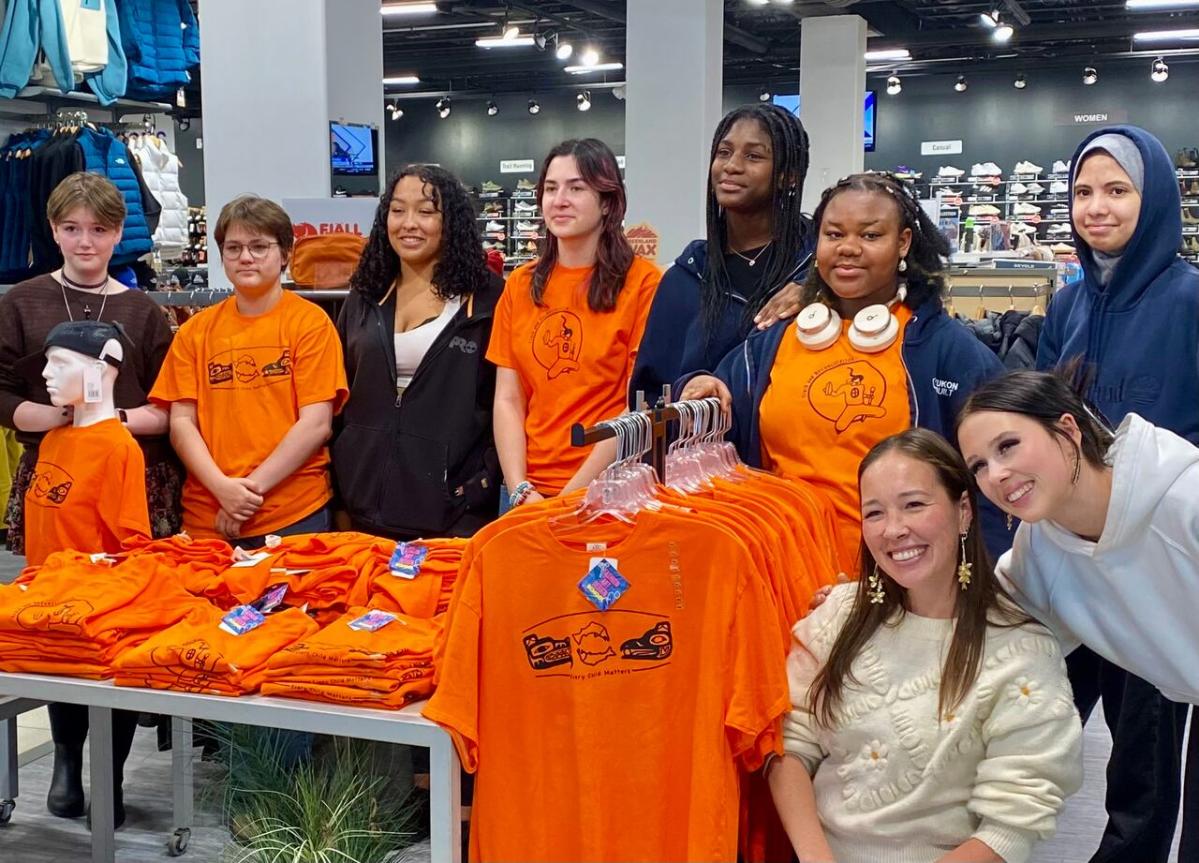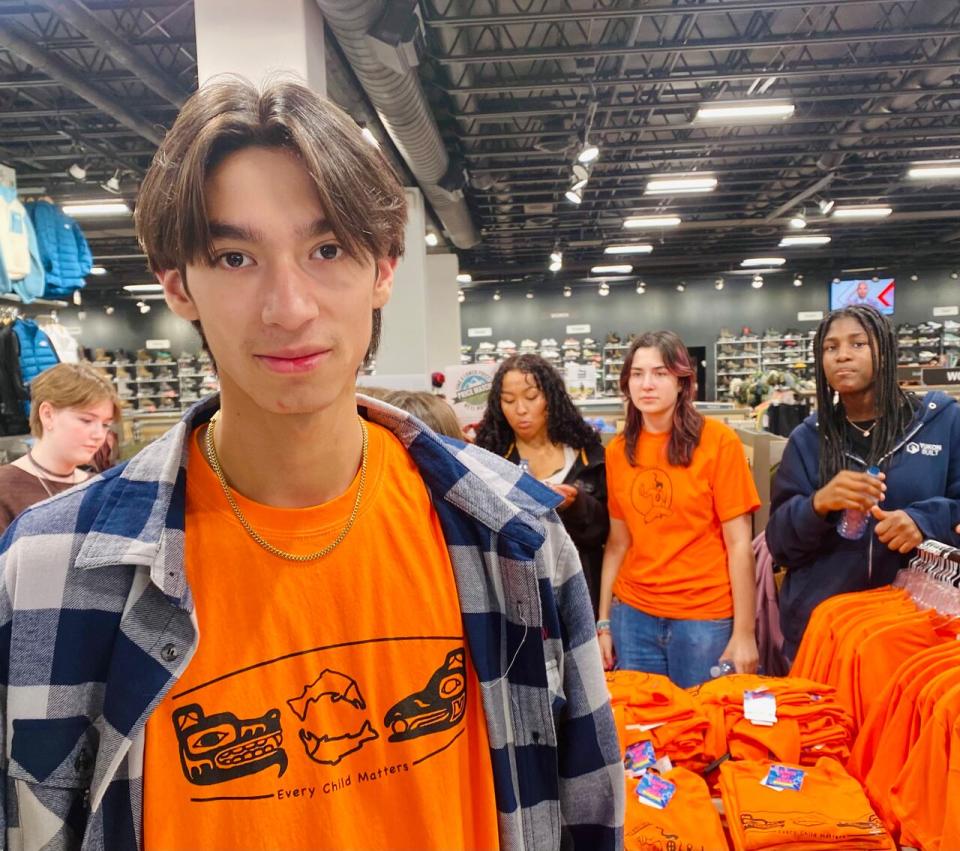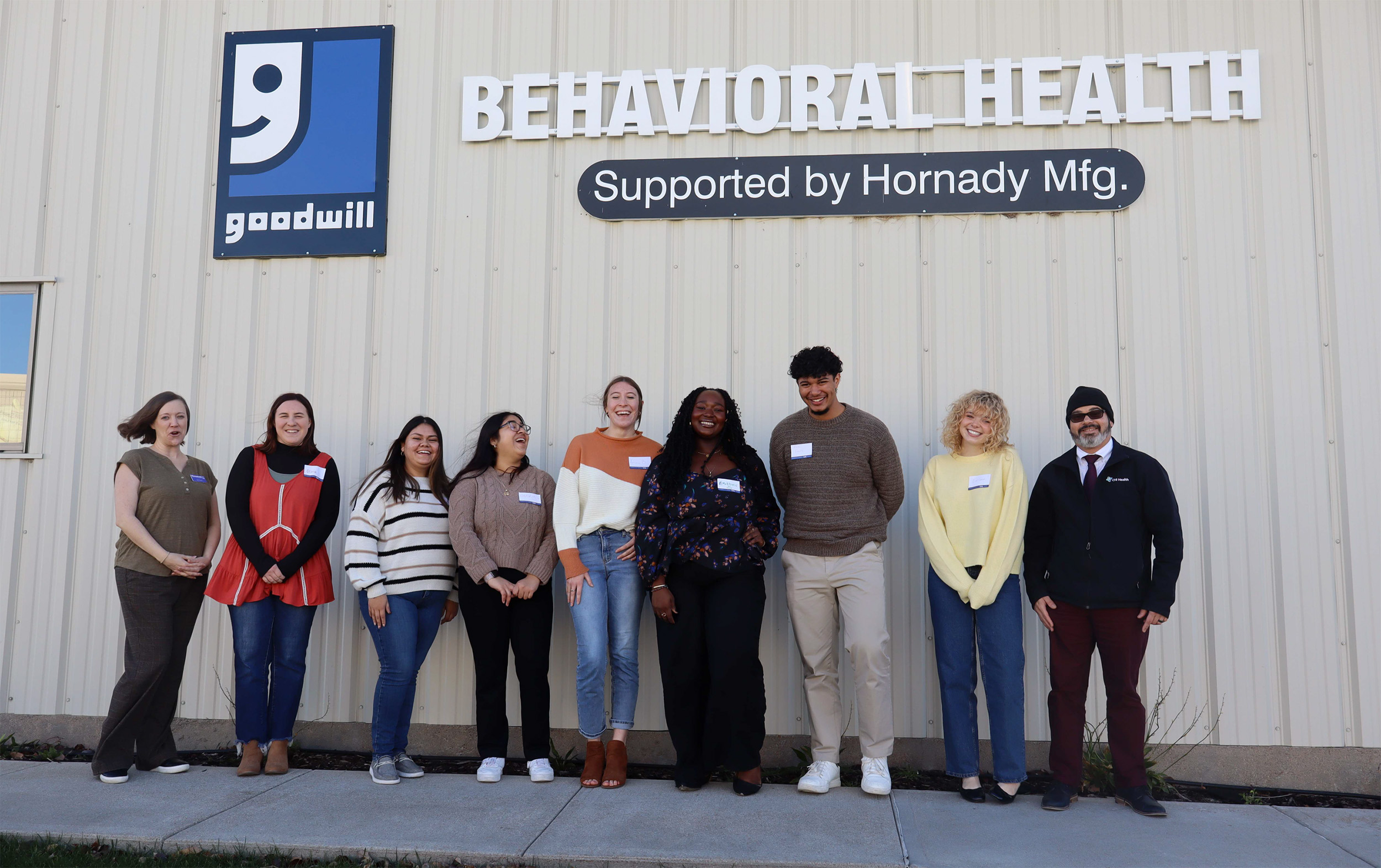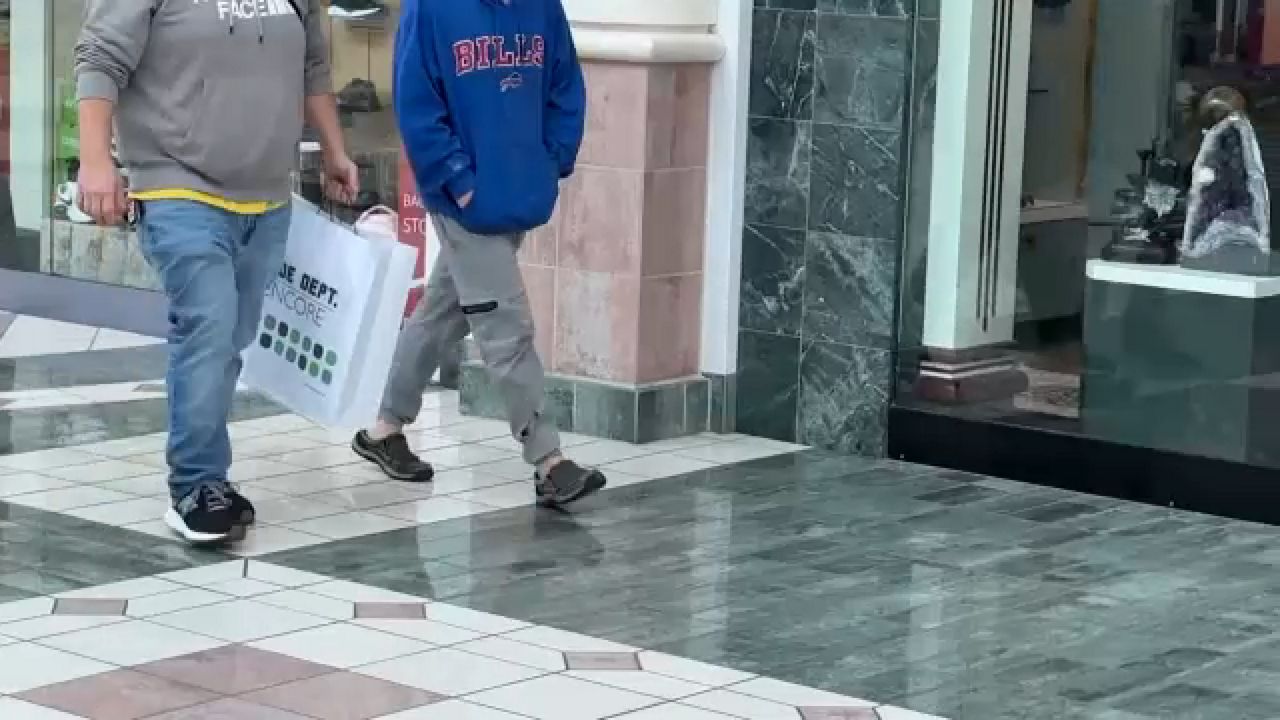Fashion
Whitehorse fashion students design and sell orange T-shirts for National Day for Truth and Reconciliation

A group of students in Whitehorse have created their own orange T-shirts as a fundraiser for the Yukon-based Committee on Abuse in Residential Schools.
Grade 10 students in the Fashion Art Design School program at Whitehorse’s Porter Creek Secondary School released their new Orange Shirt Day T-shirts on Monday, and they’re available for sale at Sports Experts.
“This is a really good way to just learn how to give back to the community that they live in, and plus the whole process of working in the fashion industry as well,” said teacher and program organizer, Kyla Greve.
“I hope that they [students] take away that they can use their art to support the community, or use their skills just to help.”
Tahltan First Nation student Harlan Koisan was one of two Indigenous students in the program responsible for designing a graphic to be printed on the shirts.
“I had a great experience making these designs. It was a way of going back to my cultural background and paying thanks and being thankful for them,” he said.
Koisan, 17, said in making his design he wanted to acknowledge the significance that salmon have in First Nations culture.

Harlan Koisan, 17, is a Grade 10 student at Porter Creek Secondary School in Whitehorse. He is 1 of 2 First Nations students in the program to design the orange shirts. (Camilla Faragalli )
“The salmon have provided food and a way of living from harvesting them through multiple generations,” he said.
He explained that his design represents the life cycles of salmon, integrating both the Wolf and Crow clans.
“The Wolf and Crow clans represent balance and how it is key to be kind and considerate of one another. My great grandfather was a Wolf and my great grandmother was a Crow,” he said.
Koisan said he started the design process by “just kicking around a few ideas and putting them into play.”
“I’m happy to see them on a shirt, and I hopefully will see a lot of them around town,” he said.
A learning experience
Greve said this is the fourth year the program has designed orange shirts ahead of the National Day for Truth and Reconciliation, which is on Monday, Sep. 30.
Each year, First Nations students create the designs, while other students dye the shirts and screen print the designs onto them.
At Sports Experts, students are then given the opportunity to experience the industry side of fashion firsthand — receiving products at the storefront, doing inventory, pricing and tagging the shirts, and planning and creating a merchandising display.
“So learning about truth and reconciliation in class and then bringing it back into the real world and learning how to support by either listening or by creating this fundraiser … I hope that they [students] are able to see that they can,” Greve said. “They can do this, and they can bring this again, year after year … just find different ways to support the community.”
Ama Nakinartey, 15, who’s also in the program, said the experience gave her a chance to show her support for truth and reconciliation.
“I put my heart and soul into this. This really means a lot to me, actually, I’ve worked so hard on this for the past two weeks,” she said.
Ahd Herbal, 15, said she enjoyed learning about First Nations culture through the experience.
“I got to know about the history of the First Nations, why we chose the colour orange, and why we chose those exact designs for the shirts, and that was really fun,” she said.
Koisan said that for him, the project had personal meaning.
“Seeing how past generations have gone through residential schools … It’s a way of just remembering them. It’s a way of remembering them and acknowledging what they went through,” he said.









/cdn.vox-cdn.com/uploads/chorus_asset/file/24040655/226285_AIRPODS_PRO_2_cwelch_0011.jpg)
